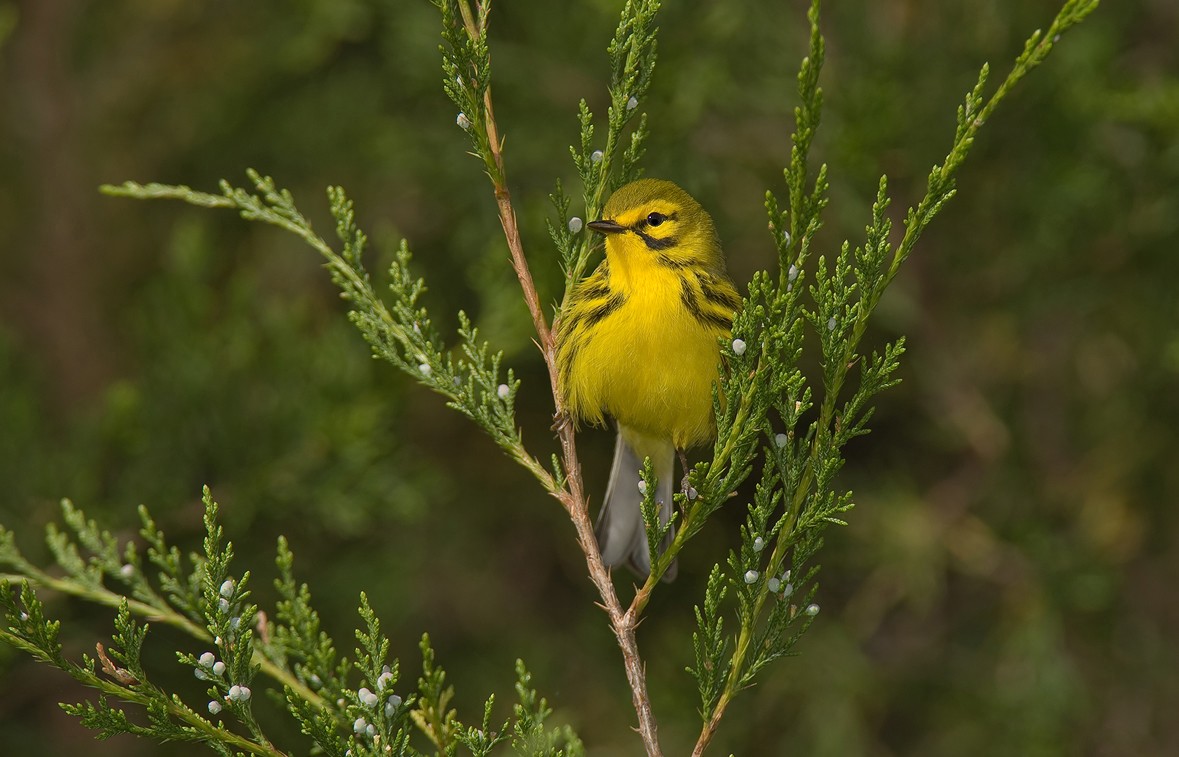Prairie Warbler
A species of Setophaga Warblers Scientific name : Setophaga discolor Genus : Setophaga Warblers
Prairie Warbler, A species of Setophaga Warblers
Botanical name: Setophaga discolor
Genus: Setophaga Warblers
Content
Description People often ask General Info
 Photo By William H. Majoros , used under CC-BY-SA-3.0 /Cropped and compressed from original
Photo By William H. Majoros , used under CC-BY-SA-3.0 /Cropped and compressed from original Description
These birds have yellow underparts with dark streaks on the flanks, and olive upperparts with rusty streaks on the back; they have a yellow line above the eye, a dark line through it, and a yellow spot below it. These birds have black legs, long tails, two pale wing bars, and thin pointed bills. Coloring is duller in female and immatures. 
Size
12 cm (4.75 in)
Colors
Brown
Black
Green
Yellow
Gold
Gray
Life Expectancy
10 years
Nest Placement
Shrub
Clutch Size
3 - 5 eggs
Incubation Period
1 - 2 broods
Number of Broods
10 - 15 days
Nestling Period
8 - 11 days
Feeding Habits
Prairie Warbler primarily feeds on small insects, spiders, and mollusks, with occasional consumption of fruit and other plant matter. They actively forage on tree branches and exhibit flycatching behavior to capture their insect prey, which constitutes their main food source.
Habitat
Prairie Warbler typically inhabits brushy areas and open woodlands with scattered trees. Preferring lower altitudes, this species thrives in temperate climates and is often found in pine and oak barrens, young regenerating forests, and along edges where forests meet prairies. Prairie Warbler adapts to human-altered landscapes, including Christmas tree farms and reclaimed mining areas. The southern populations are non-migratory and occupy mangrove forests, whereas northern populations migrate to northeastern Mexico and the Caribbean.
Nest Behavior
Prairie Warbler's nest-building occurs in spring; the species lays eggs in a sequential pattern and both parents share responsibilities in caring for the eggs and young, ensuring their survival and development.
Nest Characteristics
Prairie Warbler's nest is a shaggy cup placed 3-7 feet high in tangled vegetation of trees and shrubs. It features a dual-layered structure with plant fibers, leaves for the outer part, and softer materials like plant down, feathers, and fur inside.
Dite type
Insectivorous
People often ask
General Info
Feeding Habits
Bird food type
Bird Feeder Type

Small Tube Feeder

Platform
Sounds
Song
Recording location: United States
Behavior
Prairie Warbler is characterized by its active foraging behavior, darting through foliage to snatch invertebrates often accompanied by a distinctive tail bobbing motion. During breeding seasons, males are prominently vocal, employing an array of songs for mate attraction and territorial defense. Remarkably, prairie Warbler communicates through different song variations, indicating complex social interactions within its species. The approach of males towards potential mates is a deliberate display, involving a fluttering flight. Female receptivity is exhibited through a specific posturing and subtle tail movements. While prairie Warbler practices social monogamy, instances of extra-pair mating are observed, revealing a nuanced mating system. Outside the breeding period, prairie Warbler partakes in mixed-species flocks, highlighting its adaptability in social organization throughout the year.
Distribution Area
These birds are permanent residents in the southern parts of their range. Other birds migrate to north-eastern Mexico and islands in the Caribbean. 
Species Status
Not globally threatened.
Scientific Classification
Phylum
Chordates Class
Birds Order
Perching birds Family
New world warblers Genus
Setophaga Warblers Species
Prairie Warbler